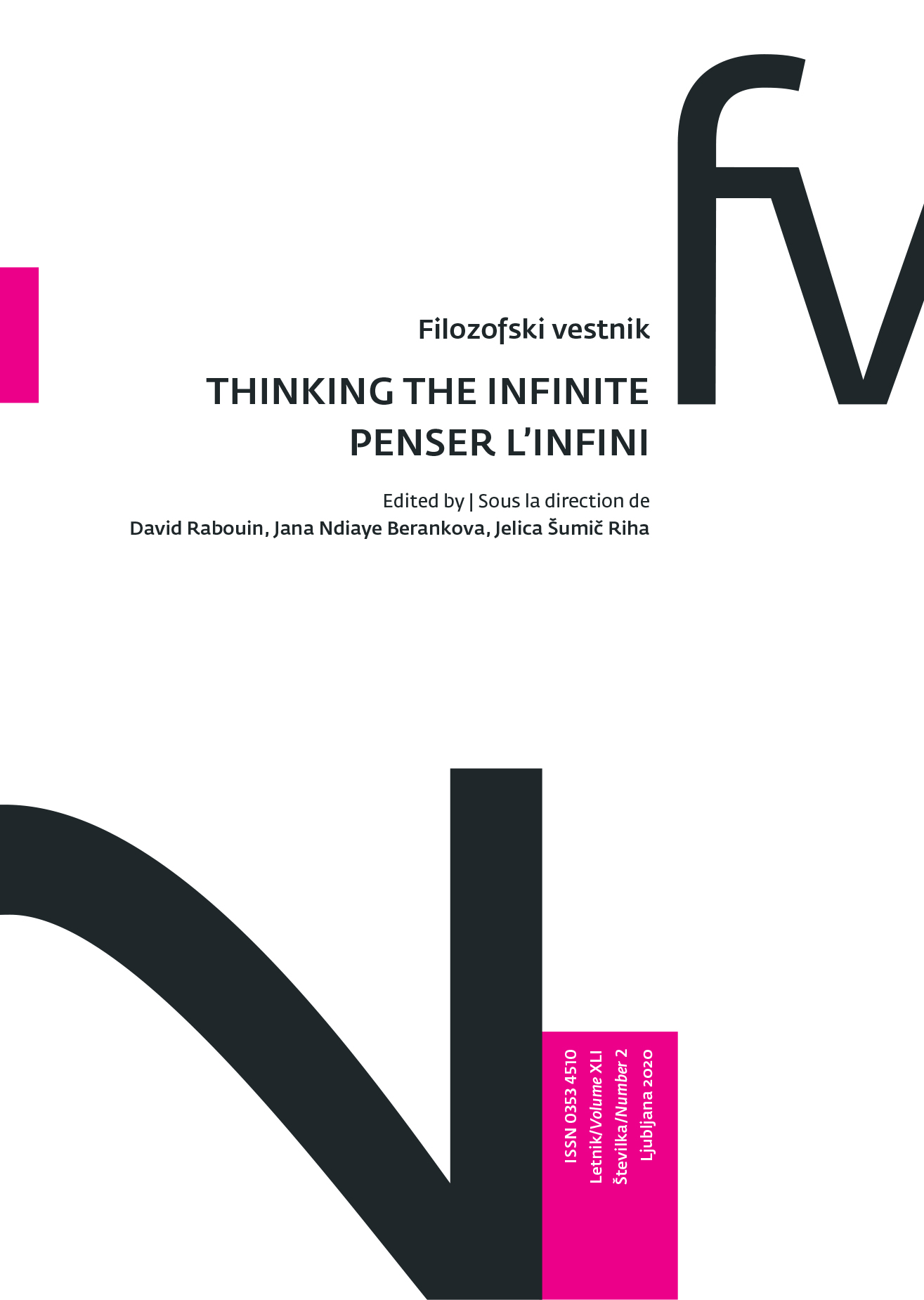Infinity between Two Ends. Dualities, Algebraic Universes, Sketches, Diagrams
DOI:
https://doi.org/10.3986/fv.41.2.09Keywords:
algebraic universe, being, Cantor, category, diagram, duality, form, ontology, phenomenology, power set, limit, shape, sketch, structuralism, ZenoAbstract
The article affixes a resolutely structuralist view to Alain Badiou’s proposals on the infinite, around the theory of sets. Structuralism is not what is often criticized, to administer mathematical theories, imitating rather more or less philosophical problems. It is rather an attitude in mathematical thinking proper, consisting in solving mathematical problems by structuring data, despite the questions as to foundation. It is the mathematical theory of categories that supports this attitude, thus focusing on the functioning of mathematical work. From this perspective, the thought of infinity will be grasped as that of mathematical work itself, which consists in the deployment of dualities, where it begins the question of the discrete and the continuous, Zeno’s paradoxes. It is, in our opinion, in the interval of each duality ― “between two ends”, as our title states ― that infinity is at work. This is confronted with the idea that mathematics produces theories of infinity, infinitesimal calculus or set theory, which is also true. But these theories only give us a grasp of the question of infinity if we put ourselves into them, if we practice them; then it is indeed mathematical activity itself that represents infinity, which presents it to thought. We show that tools such as algebraic universes, sketches, and diagrams, allow, on the one hand, to dispense with the “calculations” together with cardinals and ordinals, and on the other hand, to describe at leisure the structures and their manipulations thereof, the indefinite work of pasting or glueing data, work that constitutes an object the actual infinity of which the theory of structures is a calculation. Through these technical details it is therefore proposed that Badiou envisages ontology by returning to the phenomenology of his “logic of worlds”, by shifting the question of Being towards the worlds where truths are produced, and hence where the subsequent question of infinity arises.
Downloads
References
Badiou, Alain, La République de Platon, Fayard, Paris 2012
— Le Séminaire. Parménide. L’être 1 — Figure ontologique. 1985-1986, Fayard, Paris 2014
— L’Être et l’événement, Seuil, Paris 1988
— L’immanence des vérités. L’Être et l’événement, 3, Fayard, Paris 2018
— Logiques des mondes. L’Être et l’événement, 2, Seuil, Paris 2006
Dehornoy, Patrick, La théorie des ensembles : introduction à une théorie de l'infini et des
grands cardinaux, Calvage et Mounet, Paris 2017
Foreman, Matt et Akihiro Kanamori (dirs.), Handbook of Set Theory, Springer, Berlin et
Heidelberg 2010
Goldblatt, Robert, Topoï: The Categorical Analysis of Logic, Elsevier, Amsterdam 1984
Jech, Thomas, Set Theory, Springer, Berlin Heidelberg 1997
Kanamori, Akihiro, The Higher Infinite, Springer, Berlin Heidelberg 1994
Lacan, Jacques, «Acte de Fondation » [1964], repris dans Autres écrits, Seuil, Paris 2001
Guitart, René, textes disponibles sur : http ://rene.guitart.pagesperso-orange.fr.
Rabouin, David, Oliver Feltham et Lissa Lincoln (dirs.), Autour de « Logiques des mondes »
d’Alain Badiou, Éditions des archives contemporaines, Paris 2011
Downloads
Published
How to Cite
Issue
Section
License
Authors guarantee that the work is their own original creation and does not infringe any statutory or common-law copyright or any proprietary right of any third party. In case of claims by third parties, authors commit their self to defend the interests of the publisher, and shall cover any potential costs.
More in: Submission chapter





